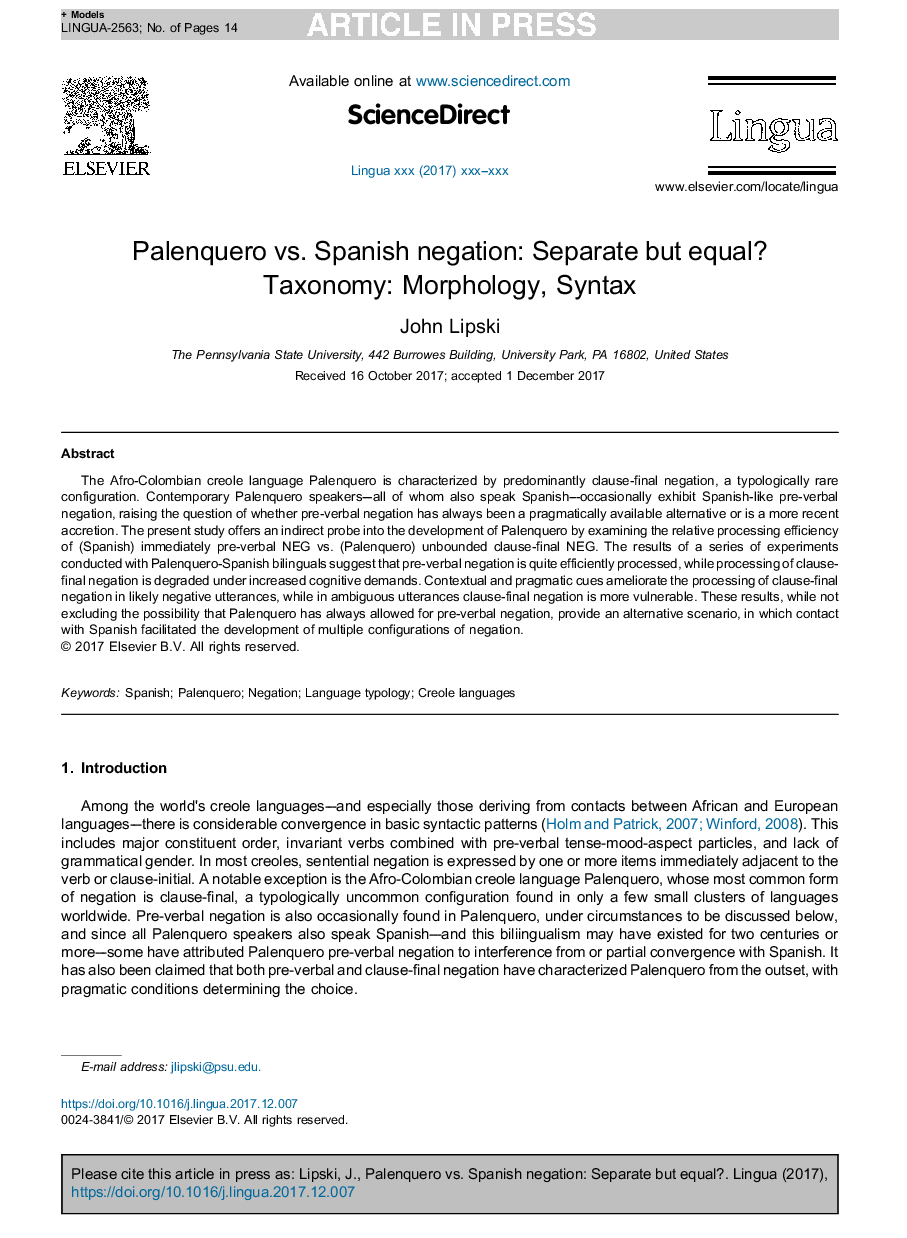| Article ID | Journal | Published Year | Pages | File Type |
|---|---|---|---|---|
| 7298432 | Lingua | 2018 | 14 Pages |
Abstract
The Afro-Colombian creole language Palenquero is characterized by predominantly clause-final negation, a typologically rare configuration. Contemporary Palenquero speakers-all of whom also speak Spanish-occasionally exhibit Spanish-like pre-verbal negation, raising the question of whether pre-verbal negation has always been a pragmatically available alternative or is a more recent accretion. The present study offers an indirect probe into the development of Palenquero by examining the relative processing efficiency of (Spanish) immediately pre-verbal NEG vs. (Palenquero) unbounded clause-final NEG. The results of a series of experiments conducted with Palenquero-Spanish bilinguals suggest that pre-verbal negation is quite efficiently processed, while processing of clause-final negation is degraded under increased cognitive demands. Contextual and pragmatic cues ameliorate the processing of clause-final negation in likely negative utterances, while in ambiguous utterances clause-final negation is more vulnerable. These results, while not excluding the possibility that Palenquero has always allowed for pre-verbal negation, provide an alternative scenario, in which contact with Spanish facilitated the development of multiple configurations of negation.
Related Topics
Social Sciences and Humanities
Arts and Humanities
Language and Linguistics
Authors
John Lipski,
